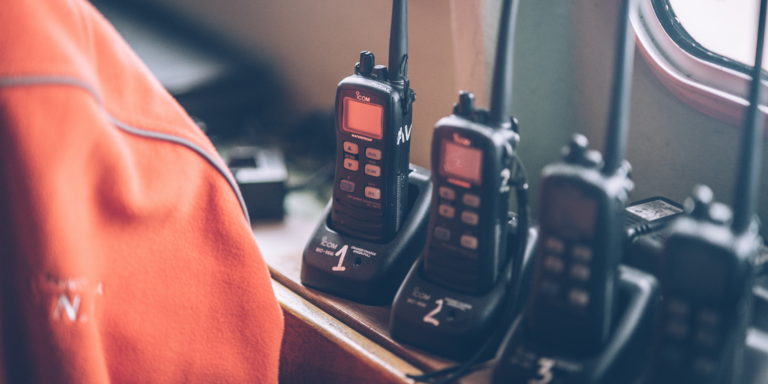How to Start a Generator That Has Been Sitting
This post may contain affiliate links, full disclosure here.
When the power goes out, a generator is an important backup for a survivalist. It may be difficult to start a generator that has been sitting for a long time because it is primarily used in emergencies and is otherwise left idle.
If a generator has been idle for an extended period of time, it may fail to start for a variety of reasons. However, it is not a cause for concern and can be remedied by the following steps:
- Removing the deposits on the spark plug and checking its condition with a recoil starter
- Replacing the oil sensor, if needed
- Cleaning the clogged air filters
- Checking the battery
- Replacing the stale fuel with a fresh one
- Closing the choke before starting the generator
- Cleaning the fuel valve, if clogged
- Cleaning the carburetor
How to Start a Generator That Has Been Sitting
Check Up
When the generator is not used for an extended period of time, some basic issues with the oil or gas may arise, which can be resolved with a quick check-up. Check the oil level, the position of the fuel valve, and the choke’s condition.
If the oil level is low, have it refilled. A dipstick can be used to check the level. An oil sensor is designed for this purpose in modern generators. Keep in mind that even if there is enough oil, the low-oil sensor may be triggered if the generator is placed on an uneven surface.
Replace Fuel
The fuel becomes stale over time, and the generator may have stopped working as a result. So, to determine if the fuel is stale, look for any odors or cloudiness or fogginess on it, and if you find it, replace it. See also: How To Store Gas Long Term: 6 Factors To Consider When Storing
Inspect Fuel Valve
The fuel valve regulates the flow of fuel from the gas tank to the carburetor. It must be open and unobstructed.
Unplug the outlet hose from the fuel valve to determine if it is clogged, and if the gasoline is not flowing freely, the valve should be cleaned or replaced with a new one. If there is an in-line filter between the fuel valve and the carburetor, remove it and inspect it for clogging.
See also: How A Portable Generator Exhaust Temperature Feature Works
Check the Air Filter
Check the air filters if the previous steps did not produce any results. The generator, like other machines, requires proper airflow to function properly. However, if a generator is left idle for an extended period of time, it is very likely that it will become clogged due to dirt or debris. As a result, the carburetor does not receive enough air for combustion.
In this case, remove the air filter and inspect it to see if it is clogged. Replace it with a new air filter if it is.
Inspect Choke Position
A choke’s function is to control the amount of air that enters the carburetor while the generator is turned on. If a generator is to be restarted after a long period of inactivity, the choke should be set to the “start” position, which is closed.
If, on the other hand, the generator was recently turned off but is still not starting, open the choke halfway or fully to restart it.
Inspect Ignition Coil
The ignition system relies on a properly functioning ignition coil and a spark plug. The ignition coil sends a high voltage charge to the spark plug, which ignites the fuel mixture in the engine and causes combustion.
If you have any doubts about the spark plug, remove it and inspect its external condition. Some deposits and buildups can encrust on its center, causing a loss of spark energy. If this is the case, clean it with a small knife or, if you have a carb cleaner on hand, spray it on its body.
Pour some oil into the spark plug hole, rotate the engine more than twice, and then start the generator before reinstalling the plug. If it doesn’t work, it means there’s a problem with the plug or the ignition coil.
Hold the plug’s body against the engine crankcase and pull the recoil starter to check for it. If bright blue sparks appear, the ignition coil is in good working order.
If the spark does not appear, place the plug close to the engine body and pull the recoil to inspect the coil. If there are sparks now, it means that the ignition coil is fine, but the spark plug has a serious problem and needs to be replaced.
Check the Oil Sensor
Check the oil sensor, which monitors the engine’s oil pressure, if the spark plug is not damaged.
To test it, first disconnect the wire that connects the engine to the oil sensor. If the engine restarts after being unplugged, this indicates that the oil sensor is the source of the problem and should be replaced immediately.
Clean the Carburetor
A carburetor, which is an engine component, is a device that mixes fuel and air to facilitate internal combustion.
When the engine is started after a long period of inactivity, the stale gasoline in the carburetor clogs the entire functional circuit.
To clean it, close the fuel valve and remove the bowl from the bottom of the carburetor along with all the stale gasoline, then clean it with a brush or a towel and clean the sharp brass jet nozzle with a needle.
If it still doesn’t work, use a cleaning spray or a carburetor cleaning product.
Check the Battery and other Electronic Plugs
In the case of an electric start generator, the battery may fail after such a long period of time.
To resolve this, use a recoil starter or a third-party battery charger to start the generator.
If the battery appears to be in good condition, look for any blown fuses. Sometimes, due to an excessive current flow, the metal ribbon inside the fuel melts, causing it to blow. As a result, the entire electronic circuit fails. So, if a fuse blows, replace it right away.
Electronic connections deteriorate due to corrosion if they are not cleaned on a regular basis. If this is the case, clean the terminals with a wire brush. If cleaning does not work, replace them entirely.
How to Start a Generator That Has Been Sitting Bottom Line
It is quite common to encounter the aforementioned issues when attempting to restart a generator after a long period of inactivity. I hope your generator starts now that you’ve taken the steps outlined above. If it does not, there may be some serious technical issues with the engine, in which case you should contact a repairer.







